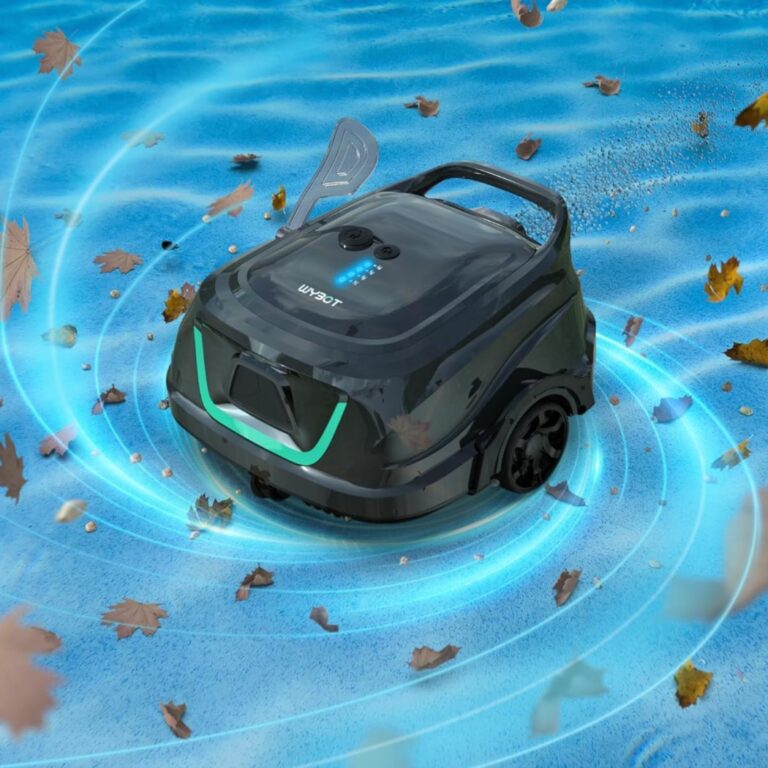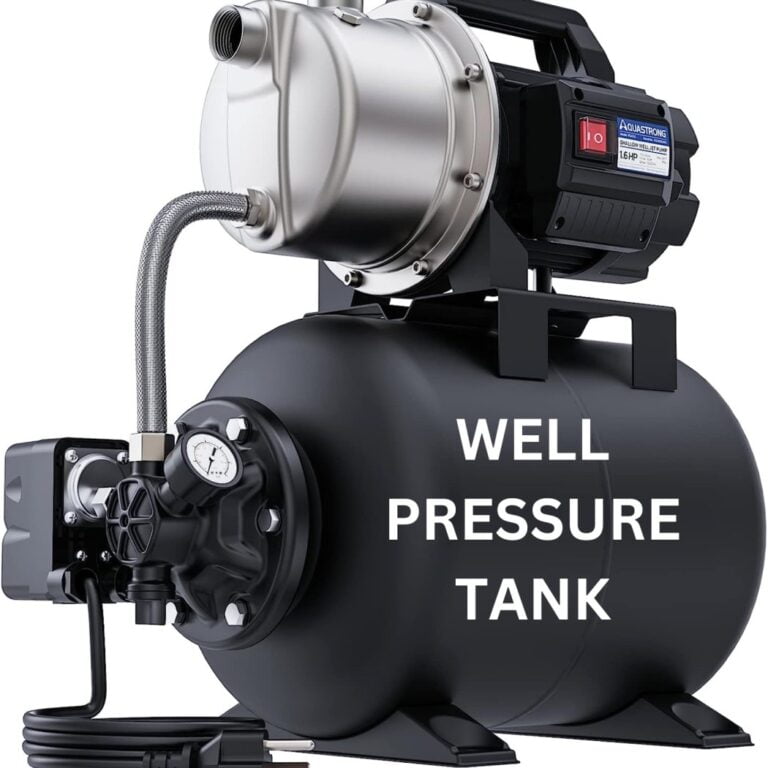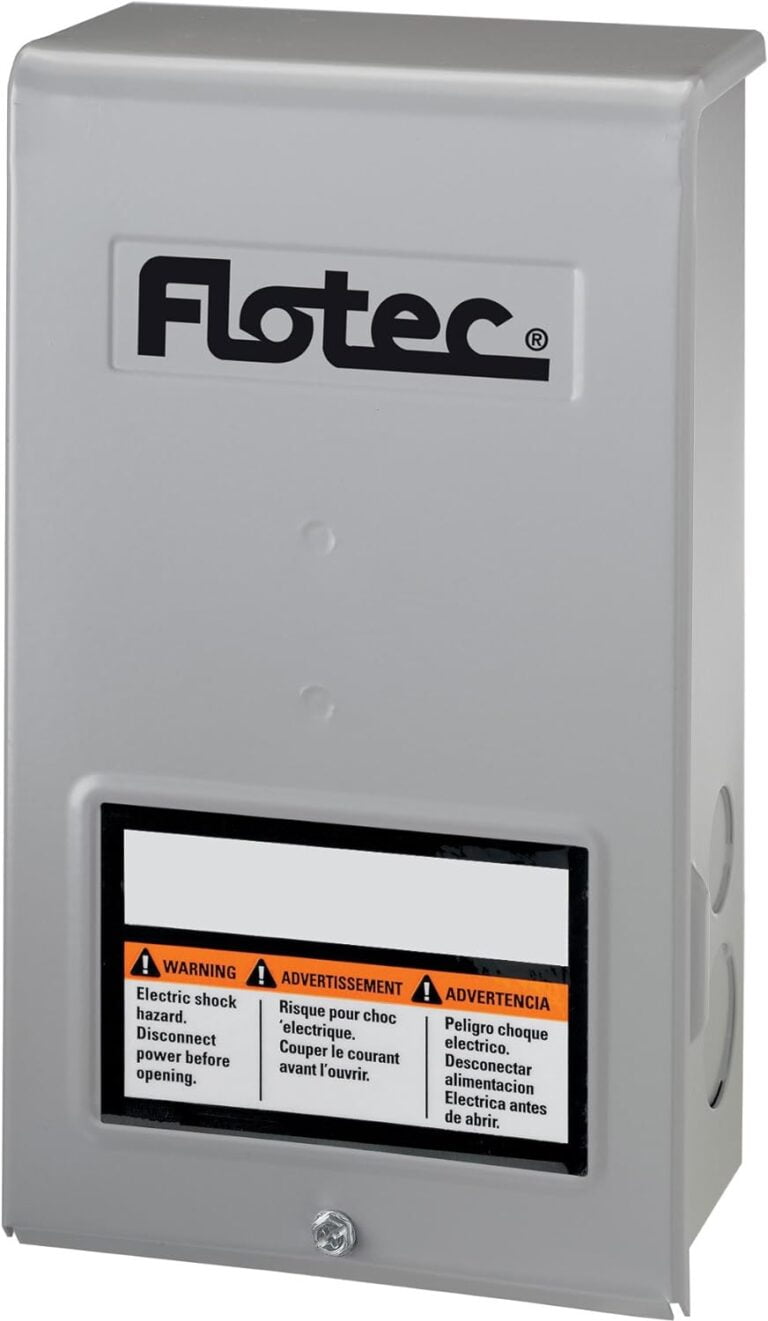What Does a Green Swimming Pool Mean?
Our editorial team independently selects all products featured in this review. This article may contain affiliate links, and we may earn a commission from purchases made through those links. For more information, please refer to our affiliate disclosure.
A green swimming pool is an unsettling sight for any pool owner. Not only is it unattractive, but it also indicates underlying problems that must be addressed.
Understanding why a pool turns green and how to remedy it is critical to keeping a clean and safe swimming environment.

Table of Contents
- 1 Understanding the Basics of Pool Water Coloration
- 2 Common Causes of Green Swimming Pool Water
- 3 Identifying the Type of Algae in Your Pool
- 4 The Health Risks Associated with a Green Pool
- 5 Testing Your Pool Water: A Step-by-Step Guide
- 6 Immediate Steps to Take When Your Pool Turns Green
- 7 Preventing Green Swimming Pool Water in the Future
- 8 Natural vs. Chemical Solutions for Green Pool Water
- 9 Signs You Need Expert Help
- 10 The Cost Implications of a Green Pool
- 11 Seasonal Considerations for Pool Maintenance
Understanding the Basics of Pool Water Coloration
Pool water can change color for a variety of causes. Clean pool water is usually transparent and blue due to the reflection of the sky and the pool’s tiling.
However, when the water chemistry is altered, or contaminants are introduced, the color can change considerably.
The most common color change is green, often caused by algae development or chemical imbalance.
Also read >>> The Best Solar Water Heaters for You
Common Causes of Green Swimming Pool Water
Algae Growth: The Primary Culprit
The most common cause of green pool water is algae bloom. Algae are microscopic plant-like organisms that flourish in water, particularly under warm temperatures and sunlight.
If pool water is not correctly sanitized, algae can rapidly multiply, turning the water green.
Chemical Imbalances: pH and Chlorine Levels
Maintaining the appropriate chemical balance in your pool is critical.
If the pH or chlorine levels are incorrect, it might encourage algae development.
Low chlorine levels, in particular, limit the pool’s capacity to eliminate algae and germs, resulting in a greenish hue.
Environmental Factors: Pollen, Leaves, and Debris

External variables such as pollen, leaves, and debris can influence pool water color. These ingredients add organic material to the pool, which decomposes and provides nutrients to the algae.
They can also clog filters and affect the efficiency of the pool’s circulation system.
Identifying the Type of Algae in Your Pool
Green Algae: The Most Common Type
Green algae are the most common and easily treated. It floats effortlessly in the water and can rapidly turn the entire pool green.
Typically, this sort of algae is caused by insufficient chlorine levels.
Mustard Algae: A Yellowish Variation
Mustard algae, sometimes known as yellow algae, is less frequent but more chlorine-resistant. It shows yellowish stains on the pool walls and flooring that resemble pollen or sand.
This sort of algae necessitates a more intensive treatment strategy.
Black Algae: The Hardest to Remove
Black algae is the most tenacious form. It forms in difficult-to-reach places such as cracks and crevices.
Its protective covering makes it resistant to chlorine, demanding vigorous brushing and powerful algaecides to remove.
Also read >>> The Best Shower Head to Buy
The Health Risks Associated with a Green Pool
Bacterial growth and infections. A green pool may contain hazardous bacteria, posing significant health dangers. Bacteria such as E. coli can thrive in improperly managed pools, causing gastrointestinal issues and infections.
Skin and eye irritations. Swimming in green pools can irritate the skin and eyes. Algae and bacteria can irritate the skin, causing rashes, and an uneven pH can cause redness and irritation in the eyes.
Respiratory issues from poor water quality. Poor water quality might also cause respiratory difficulties. Inhaling or ingesting polluted water can worsen asthma symptoms and other respiratory disorders, especially in children and those with weakened immune systems.
Testing Your Pool Water: A Step-by-Step Guide
Essential Testing Kits and Tools
Regular testing is required to maintain the optimal condition of your pool water.
Use dependable testing kits for pH, chlorine, and alkalinity levels. Pool owners commonly use digital testers, test strips, and liquid test kits.
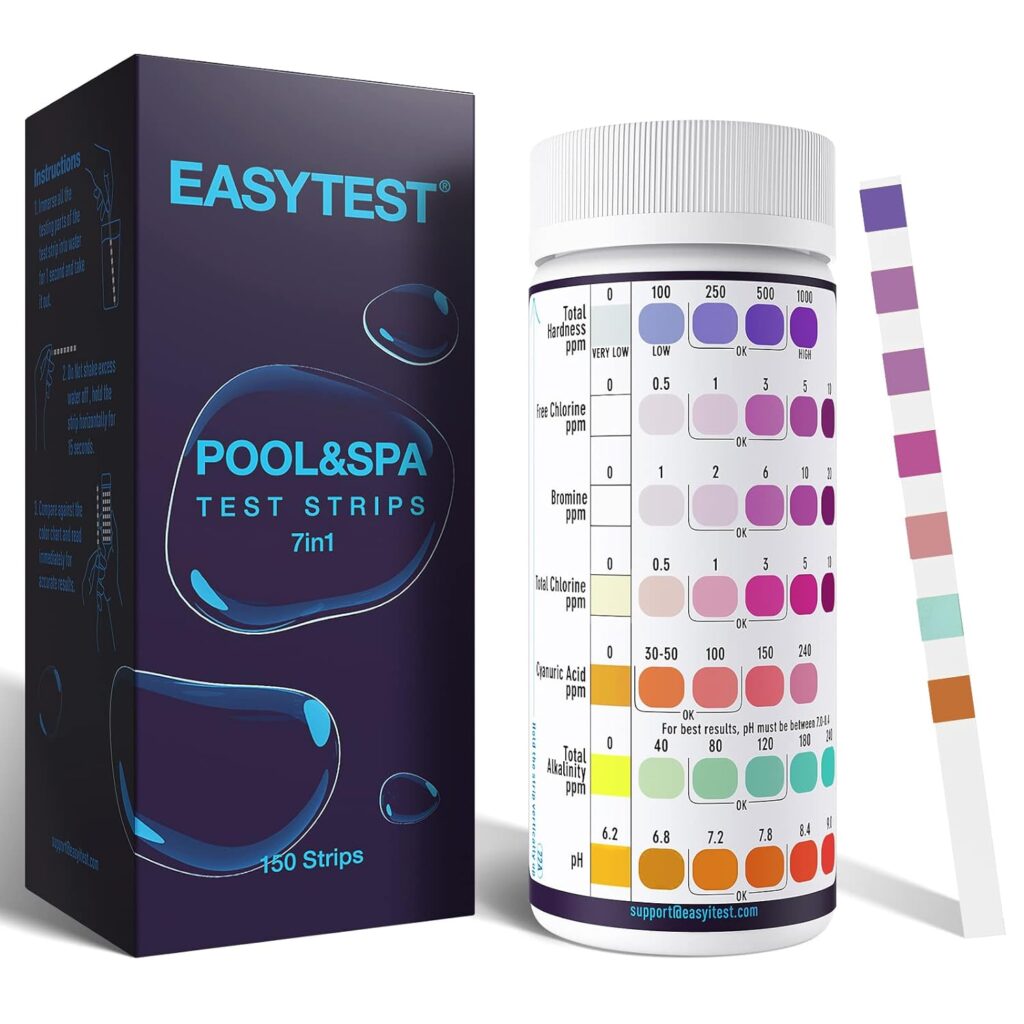
How to Test pH, Chlorine, and Alkalinity Levels
To test your pool water, take a sample at elbow depth and follow the instructions on the testing kit.
Aim for pH levels between 7.2 and 7.6.
Chlorine levels should be between 1 and 3 parts per million (ppm), and alkalinity should range from 80 to 120 ppm.
Interpreting Test Results: What They Mean
Understanding the test results allows you to take proper action.
High pH implies alkaline water, which can lead to scaling and impair chlorine efficiency.
Low pH indicates acidic water, which leads to corrosion and discomfort.
Adjust chemical levels based on test findings to keep the pool balanced.
Immediate Steps to Take When Your Pool Turns Green
Shocking Your Pool. It is adding a significant amount of chlorine to destroy algae and bacteria. Use a high-quality shock treatment and adhere to the manufacturer’s directions. Keep the pool filter running during this operation to ensure the chlorine is circulated adequately.
Physical removal of algae. After shocking the pool, scrub the walls and floor to remove algae. Use a pool vacuum to remove dead algae and debris on the bottom. This physical removal is critical for preventing algae from returning.
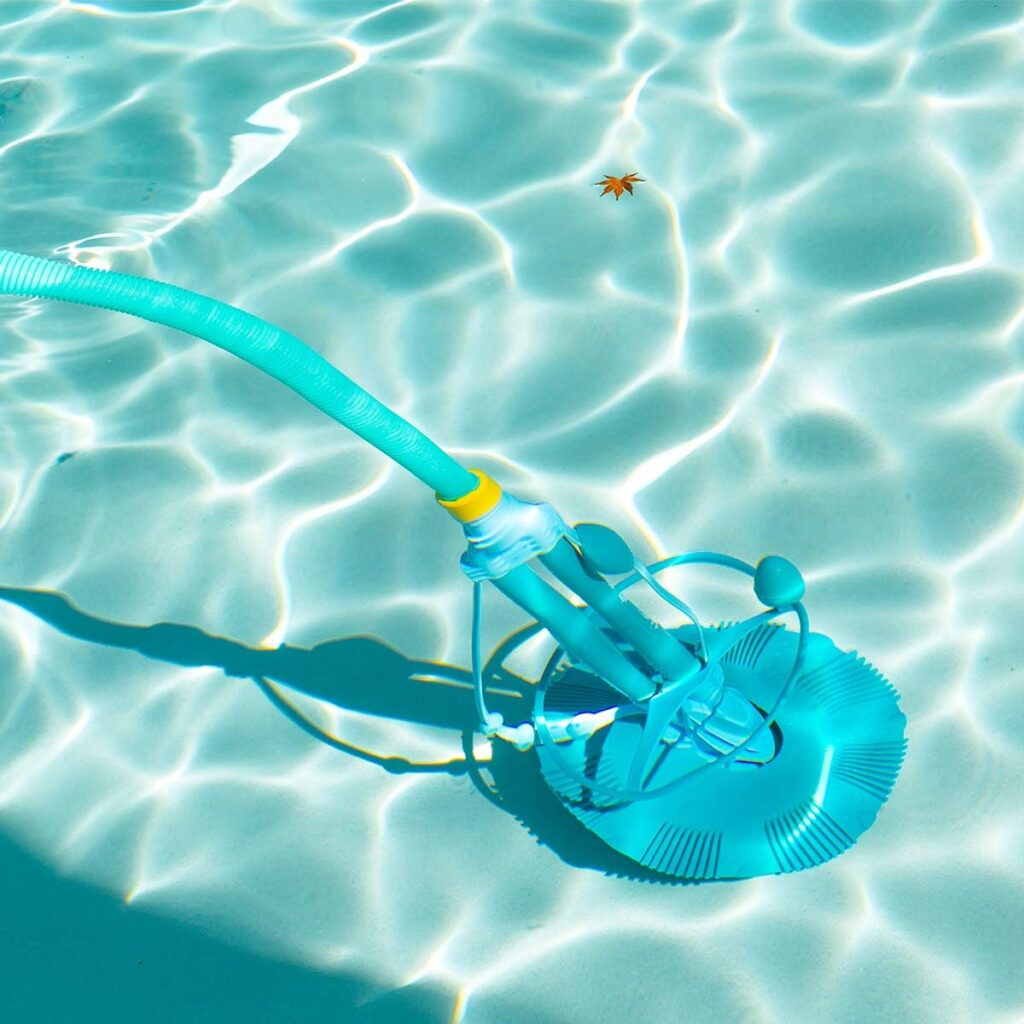
Ensuring proper filtration. Clean or backwash your pool filter to eliminate any trapped algae and debris. A clean filter improves water circulation and filtration, critical for preserving clear water. Check the filter regularly and clean it as necessary.
Preventing Green Swimming Pool Water in the Future
Regular maintenance and cleaning routines. To keep your pool in top condition, create a routine maintenance regimen. Skim the surface every day, brush the walls once a week, and vacuum regularly. Consistent cleaning avoids the collection of debris and organic matter.

Maintaining proper chemical levels. To keep your pool balanced, test it regularly and adjust the chemicals accordingly. Maintaining the appropriate pH, chlorine, and alkalinity levels minimizes algae formation and promotes a safe swimming environment.
Using algaecides and clarifiers. Algaecides can prevent algae growth. Clarifiers help clear hazy water by aggregating microscopic particles into larger ones that are easier to filter out. Use these products precisely as suggested to keep your pool water sparkling.
Natural vs. Chemical Solutions for Green Pool Water
Pros and Cons of Chemical Treatments
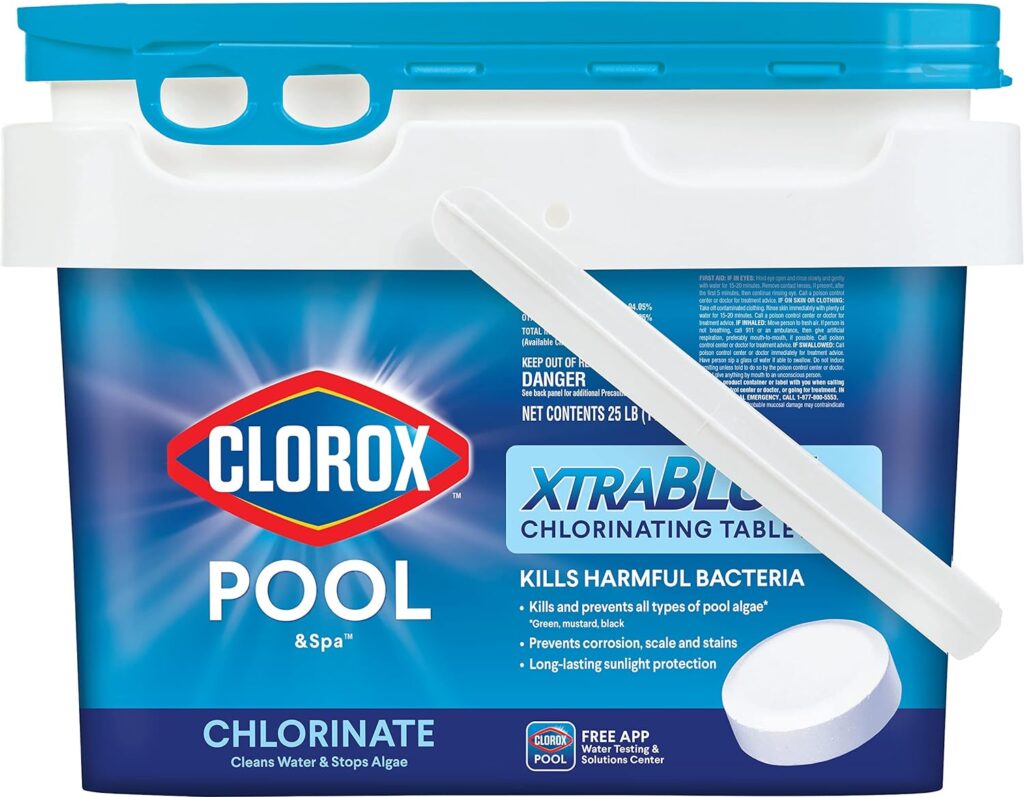
Chemical treatments are effective and quick but can harm the environment and swimmers. Chlorine and algaecides effectively eliminate algae.
However, they can cause skin and eye discomfort. Use them sparingly to avoid undesirable consequences.
Eco-Friendly Alternatives and Their Effectiveness
Eco-friendly solutions, such as UV or ozone systems, are less environmentally harmful.
These methods sanitize water naturally, reducing the need for chemicals. While the results may take time, they provide a long-term solution to pool maintenance.
Also read >>> Shower Heads With Hoses for Your Bathroom
Signs You Need Expert Help
- If algae persist despite your best efforts, it may be time to contact a specialist. Persistent algae problems may suggest underlying concerns, such as inadequate circulation or concealed nutrient sources, necessitating expert evaluation and treatment.
- Severe chemical imbalances might be challenging to address without professional assistance. Experts can precisely test and adjust chemical levels to keep your pool safe and balanced.
- Structural issues or equipment breakdowns, such as malfunctioning pumps or leaks, require professional help. Attempting to resolve these issues without the necessary knowledge can result in additional harm and increased repair expenses.
The Cost Implications of a Green Pool
- Short-term treatment costs. Treating a green pool incurs immediate costs for shock treatments, algaecide, and other chemicals. Depending on the severity of the problem, these costs might quickly pile up, but they are required to restore water quality.
- Long-term maintenance expenses. Regular maintenance is critical for avoiding future green pool difficulties. Allow for continuing expenses like chemicals, testing kits, and equipment upkeep. Consistent treatment decreases the chance of costly future repairs.
- Budget for professional services. Professional pool services can be costly but may be required for severe difficulties. Set aside a chunk of your cash for expert cleanings and repairs to keep your pool in peak condition.
Seasonal Considerations for Pool Maintenance
Preparing Your Pool for Summer Use
As summer approaches, prepare your pool for additional use.
Clean thoroughly, balance the chemicals, and inspect the equipment to verify everything works. A well-prepared pool ensures a safe and fun swimming experience.
Winterizing Your Pool: Preventing Algae Growth
Winterizing your pool entails more than simply covering it.
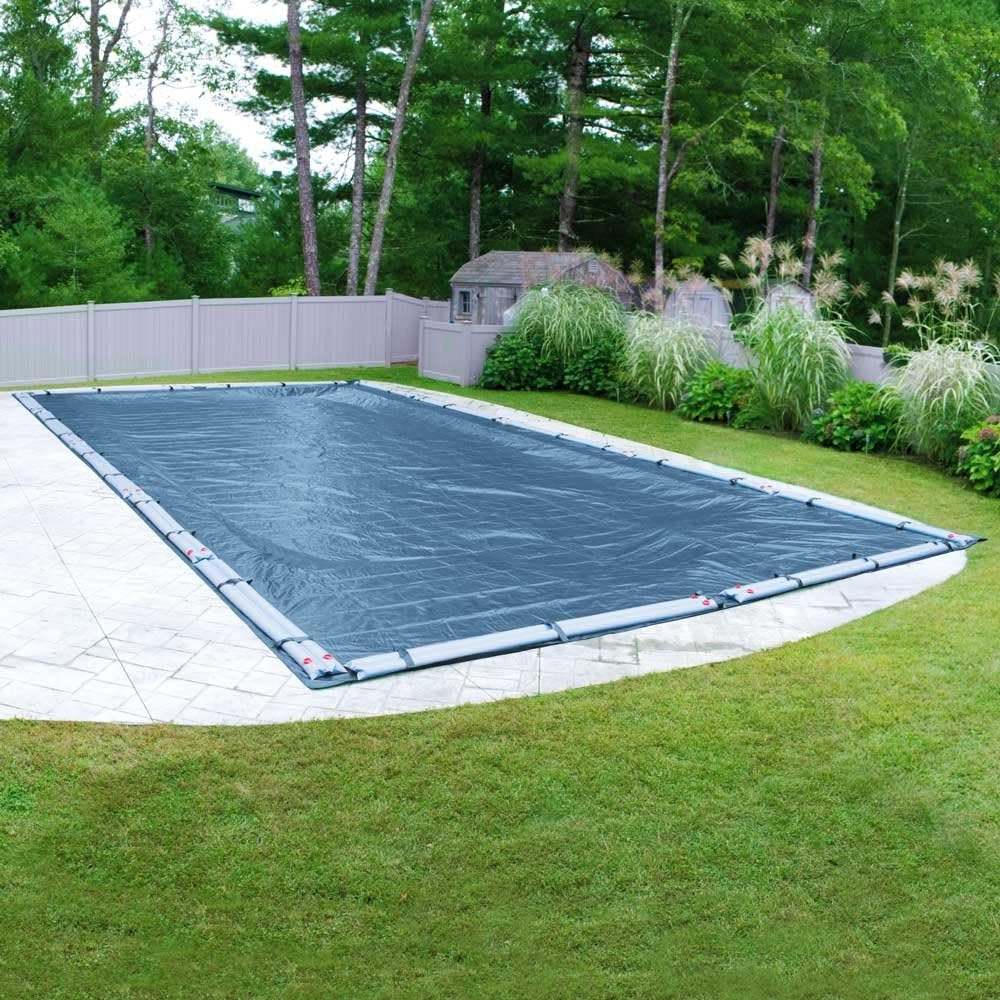
To avoid algae growth in the off-season, balance the chemicals, clean the pool, and use a winterizing algaecide. Proper winterization protects your pool and makes reopening easier in the spring.
Adapting Maintenance Practices for Different Climates
Pool maintenance varies according to climate. Hotter locations require more regular cleaning and chemical adjustments due to higher evaporation rates and debris. Cooler areas necessitate specific winterization measures to avoid freezing and algae growth.
Understanding the causes and treatments for a green swimming pool will help you maintain a clean, safe, and pleasant aquatic environment.
Regular maintenance, proper chemical balance, and prompt, professional assistance are essential for keeping your pool in top condition.
Also read >>> The Best Gadgets for Chilling at the Swimming Pool

